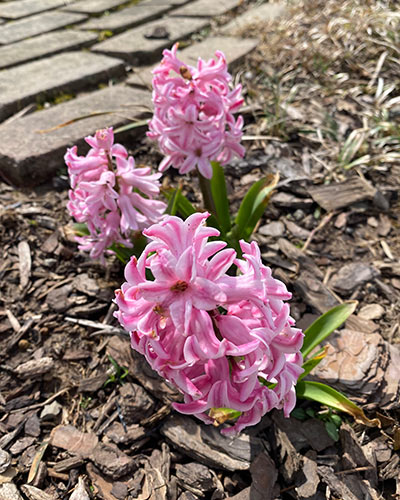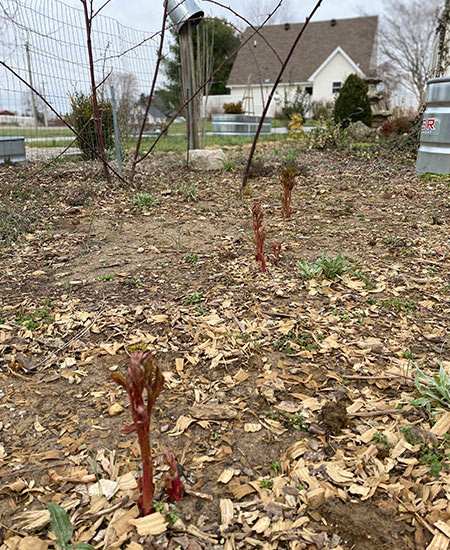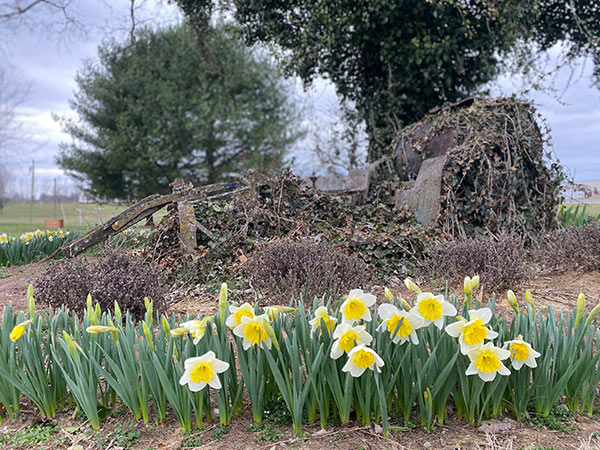“Blossom by blossom the spring begins.”
—Algernon Charles Swinburne
March has arrived in its typical unpredictable manner. Here at the farm, we’ve had a chance to enjoy some warm, pretty days—and now we’re expecting snow! What’s the old adage? March comes in like a lion and goes out like a lamb. Or is it the other way around? Only Mother Nature knows for sure.
In our gardens, we’re seeing daffodils, crocus and hyacinths bloom—all varieties in staggering stages.

The tulips are coming along, the alliums are just starting to emerge and the peonies are absolutely surprising me—they look amazing for this point in the season—which brings me to our March must-do tasks.

March is the month for feeding peonies, pruning perennials, amending soil, side-dressing and checking for root erosion.
When peonies reach a height of 3-4 inches, feed them with a low nitrogen fertilizer. This will encourage more blooms and less dense, leafy growth. For a flower farmer, this is a very important maintenance task. If not performed, you will have fewer peony blooms.
Prune your perennials and remove any of last year’s debris from around flowering plants and garden shrubs. This cleanup will bring the garden back to life, allowing daylily, iris and other perennial foliage to emerge with greater lushness. It also keeps fungus and disease at bay. Remember, spring comes with rain, and you don’t want last year’s debris trapping excess moisture around your plants and wreaking havoc on vulnerable perennials.
March is also time to improve your soil quality. Add soil amendments such as compost, worm castings or matured manure to garden areas where you expect an abundance of plantings. Honestly, I live by this garden saying: Without a good foundation, you’re cheating yourself out of a successful growing season.
In addition to spreading and working amendments into existing garden soil, I like to side-dress freshly planted shrubs, small flowering trees and berries. In fact, just today I side-dressed around a young quince row.
While you’re at it, also check last fall’s new plantings for root erosion. Oftentimes, you’ll find that the freezing and thawing of ground over winter pushes up these plantings, exposing their roots, which can damage your investment or even kill the young plants.
So, now that March is here, enjoy watching the spring flowers bloom, but don’t neglect your gardening duties. I encourage you to follow this simple March garden guide to help you prepare for the upcoming growing season.
Happy Gardening!
Pamela Anthony
Beehind Thyme Farm & Garden

